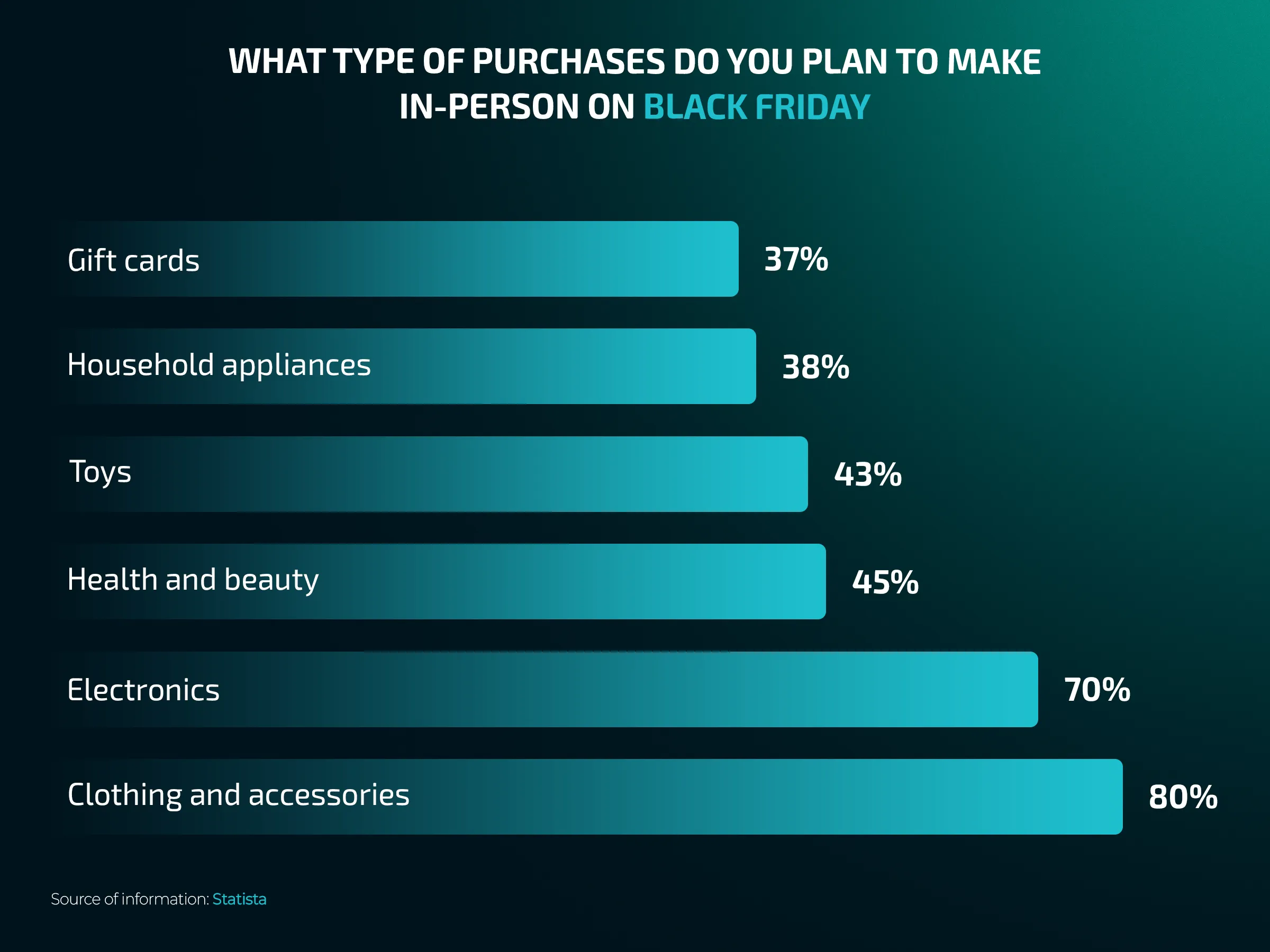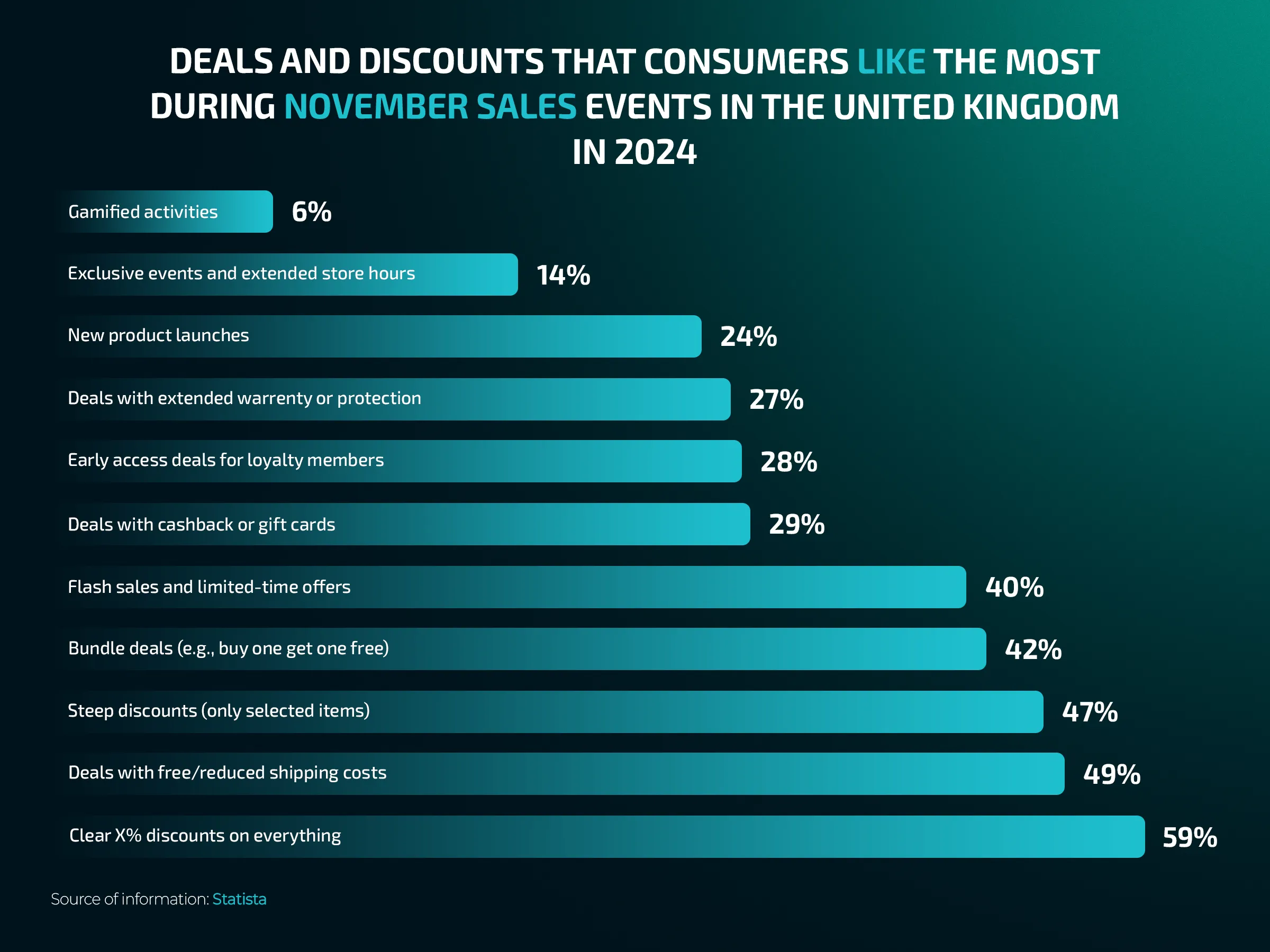What Do You Associate Black Friday With?
Usually, it’s the record-breaking discounts retailers offer and the amazing deals shoppers rush to grab within minutes.
We’re sharing with you a slightly different and curious perspective on the history of Black Friday and how this day became such a major event for businesses and consumers around the world.
Why “Black,” and Why Friday?
The first mention of a “Black Friday” dates back to the 17th century in the United States - though in a completely different context from what we know today. The day followed Thanksgiving and was dedicated to giving thanks for the blessed harvest and the passing year. Over time, however, it lost its importance among the population.
More than a century later, an event in Philadelphia once again went down in history as a “Black Friday.” The streets of the city - like those of every thriving American town at the time - were packed with people. Stores were overflowing with visitors and eager shoppers. This all happened on the Friday after Thanksgiving and coincided with another huge event - the annual Army–Navy football game.
The game was scheduled for Saturday, and the massive crowds gathering in the city were good news for local merchants - but not for the police. Unlike most people, officers couldn’t take the holidays off. They even had to work overtime to manage the chaos in the streets. As a result, they started referring to the days after Thanksgiving as “Black Friday” and “Black Saturday,” describing the difficult and exhausting work they faced during the celebrations.
Year after year, the shopping frenzy grew stronger. Philadelphia’s merchants tried to rebrand the days after Thanksgiving as “Big Friday” and “Big Saturday,” hoping for a name that would sound more positive to customers. However, “Big Friday” never caught on, and “Black Friday” still carried negative connotations.
That changed in the 1980s, when “Black Friday” began to be associated with a positive event — a turning point in the day’s history as we know it today. At the time, accounting was still done on paper. Negative amounts were written in red ink, while positive amounts were marked in black.
Traditionally, many retailers operated at a loss for most of the year — from January to November — and only turned a profit during the holiday season starting right after Thanksgiving. That was the day they were no longer “in the red” and could finally take out their black pens. It was time for profits - written in black.
Over the following years, the name “Black Friday” grew in popularity, and the crowds of eager shoppers multiplied every year.
A Key Business Event in the 21st Century
Until just a few years ago, the term “Black Friday” referred only to the single day after Thanksgiving. Today, however, it marks the start of the shopping frenzy, which reaches its peak on Cyber Monday - the Monday following Black Friday, when online retailers take center stage.
Here are some of the forecasts published by Black Friday Statistics for the 2025 campaign:
- Estimated online sales during Black Friday 2025: $11.7 billion
- Cyber Monday 2025 turnover: $14.2 billion
- Biggest discounts (up to 28% on average) expected in categories such as electronics, clothing, sports goods, and home furnishings
- Over 56% of purchases will be made from mobile devices
- Much longer research and decision-making cycles among consumers
- 520% increase in online traffic generated by AI platforms compared to Black Friday 2024


Source: Statista




